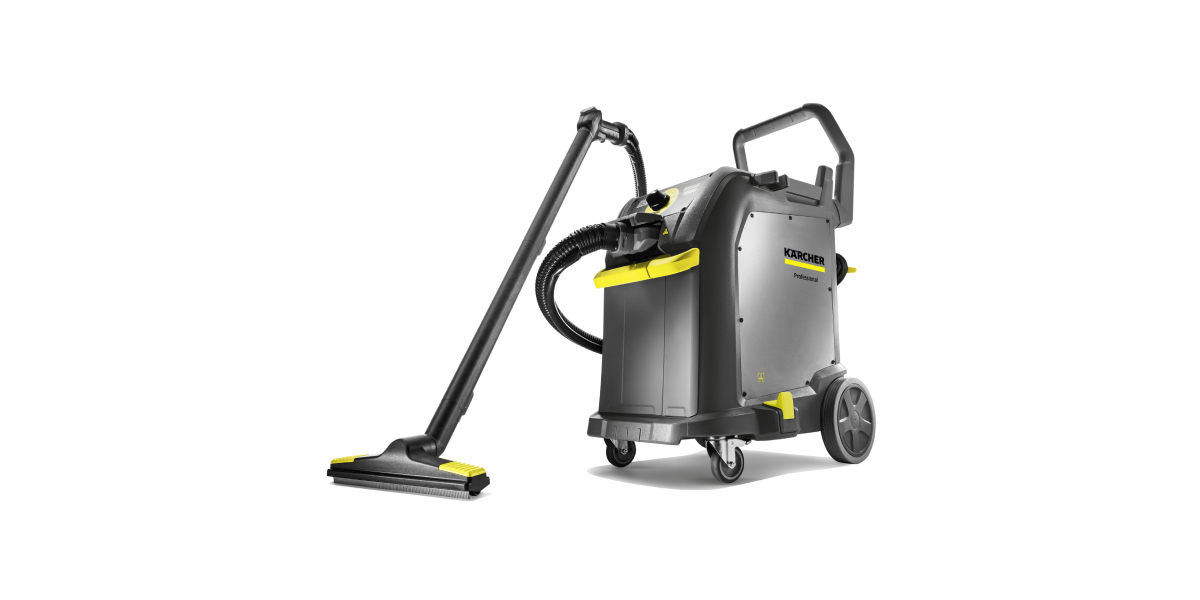Information and tips to reduce the infestation risk of bedbugs
Bedbugs often go unnoticed on luggage or goods transport and are primarily found in places with high passenger traffic. They nest in gaps, cracks and crevices and behind skirting boards or bed headboards. Their bites cause intense itching. With their steam cleaners, Kärcher offers a chemical-free application that can assist in tackling the spread of parasites.
Tackling bedbugs with hot steam
An infestation is chemically treated by professional pest control. However, the insects are becoming more and more resistant to the remedies used. Therefore, any affected parties should take action in consultation with the pest controller.
Hot water steam is an effective and chemical-free solution against bedbug infestation: At a distance of five centimetres the killing effectiveness for all development stages of bedbugs is 100%*.
Kärcher steam cleaners are certified for elimination of bedbugs
Kärcher had its steam cleaners for use at home as its steam cleaners and steam vacuum cleaners for professional users tested for their effectiveness in containing these parasites by the lab of the French Institute for the Study and Control of Bedbugs (INELP**). The result: The machines eliminate 100% of the bedbugs in any growth stage*. The bugs and their eggs are not heat-resistant and die at temperatures over 60°C (140°F)***. This means that steam cleaners can be effectively used as a chemical-free solution in the battle against bedbugs at home. A professional application can be carried out in places with high movement of people, for example in hotels or on public transport.
Please note: Despite the official certificate for the eliminiation of bedbugs, the use of our steam cleaners is no substitute for a professional exterminator. Professional cleaning is essential to effectively and permanently eliminate a bed bug infestation. Our devices are suitible for greatly reducing an infestation and for removing bed bug edd clutches, for example.


Steam application - what you need to know
The application of steam cleaners is a supporting measure. When used properly they can reach eggs of bedbugs that sit on furniture, walls and floors and kill them with their water steam. It is important that the nozzle is guided slowly over the area at a distance of maximum five centimetres. The steam then has enough time to heat the surface and penetrate into the layers. Working from top to bottom: Curtains or blinds are steamed first, then the lower-lying objects such as bed frames or skirting boards. Treatment with the steam cleaner should be avoided on heat-sensitive materials, thick upholstered furniture and mattresses.
Compared to insecticide spray, the steam application penetrates better into narrow gaps, gets through fabrics and is not toxic. The hot steam is also able to kill off all life stages of bedbugs, including eggs.*
If the bedbugs have already hatched, they can grow to a size of up to 8.5 millimetres. Older bugs can therefore also be spotted with the naked eye and vacuumed with a vacuum cleaner with HEPA filter and bag. After vacuuming it is necessary to safely dispose of the vacuum bag. For this, the sealed vacuum bag is placed in a plastic bag and the contents are treated with insecticides. Alternatively, the plastic bag can be placed in the freezer overnight and then disposed of in the bin.****
Take preventive measures to detect an infestation early
Bedbugs like to hide in gaps or holes in furniture, walls or floors, which must be sealed where possible. A possible infestation can be identified early if upholstery such as couches, beds and mattresses are regularly examined for signs such as small brown stains or shedding skin. Protective covers for mattresses and pillows can make it difficult for bedbugs to attack. Hygiene measures such as regular washing at high temperatures and vacuum cleaners reduce the potential of bedbugs and their eggs.
Keep your home clean and tidy to minimize potential hiding spots for bedbugs by...

… regularly inspecting beds, mattresses, and furniture for signs such as small brown stains or shed skins.
… using protective covers for mattresses and pillows to make it harder for bed bugs to infest.
… good hygiene like washing at high temperatures and vacuuming reduces potential of bed bugs and their eggs
… ensuring there are no cracks, crevices, or gaps in furniture, walls, or flooring where bed bugs can hide.
… avoiding purchasing used mattresses or furniture as they may harbor bed bugs.
... thoroughly inspect second-hand articles.
When traveling…
… leave your luggage packed until you have checked the accommodation on signs of bed bugs.
… avoiding leaving clothing on the floor or the bed at the hotels and other accommodations
… thoroughly inspecting your luggage after traveling to ensure no bed bugs have been introduced.
Suitable products for your home area of application
Keep your hotel and guest area clean and tidy to minimize potential spots for bedbugs by...

… setting up an action plan including prevention as well as specific actions after infestations.
… proactive training of staff on how to recognize bed bugs and how to act if an infestation is suspected.
… regularly inspecting guest rooms for signs such as small brown stains or shed skins.
… using protective covers for mattresses and pillows and maschine wash them regularly according manufacturers recommendation.
… proactive check of cracks and damage of wallpapers, skirting boards as well as loose joints in bedding and other furniture where bugs might hide.
… thoroughly inspect and clean the cleaning machines as well. They can become a hiding place for bed bugs.
… design new guest rooms in a pest safe way to avoid infestations with bed bugs as well as with parasites







